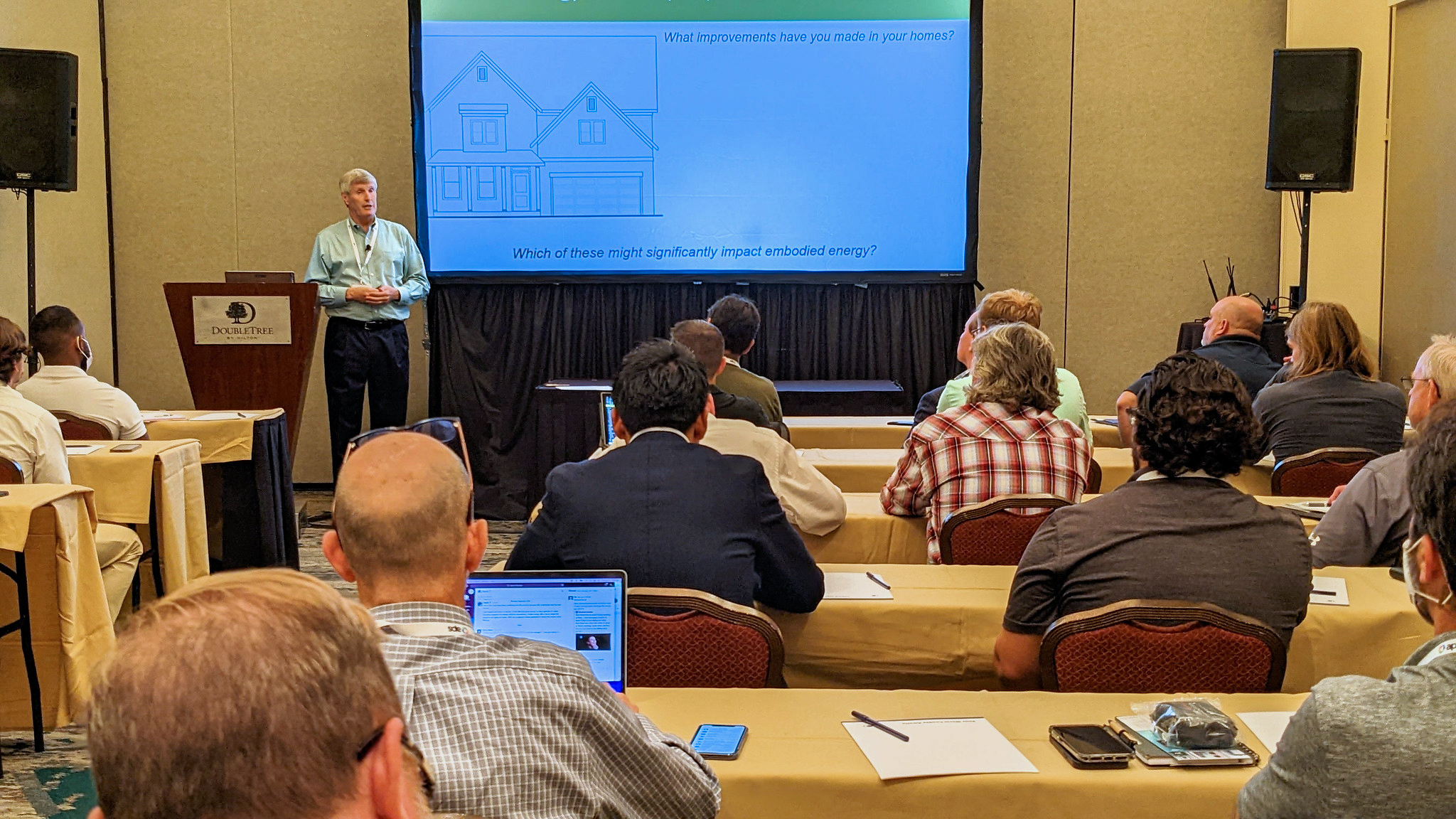If there’s one thing I took away from the 2022 EEBA High Performance Home Summit, it’s that decarbonization is a very hot topic. Over 30% of sessions featured decarbonization as the main item of discussion. Whether it’s embodied or operational carbon, builders and industry professionals are narrowing down the best ways to decrease carbon emissions.
The new imperative in the U.S. is to reduce carbon emissions by 26% to 28% in the next three years. Then, to net zero carbon by 2050. Builders already have a housing crisis to deal with—what type of carbon are they supposed to focus on first?
DECARBONIZATION INITIATIVES IN HOMEBUILDING
“No matter where the carbon comes from, it’s all the same problem,” says Chris Magwood, manager, Carbon-Free Buildings, at RMI.
According to Magwood, there are a few areas where incremental change can help builders bring down their carbon footprint. He suggests that focusing on a 5% reduction in carbon emissions per year can lead to a 40% overall reduction by 2030.
Some of these simple initiatives include:
- Concrete: Specifying a low-carbon concrete mix.
- Insulation: Move to an insulation product that’s the best in its category.
- Drywall: Same here—find the best low-carbon products on the market.
- Cladding: Same here.
- Flooring: Change flooring to best available.

Decarbonization in home systems
One session from the Summit shared data from a nation-wide study on whole-home mechanical ventilation (WHMV) systems. One key finding? WHMV’s have a large impact on carbon dioxide from bio-effluents and people-associated emissions. This is especially apparent when home occupants are sleeping.
Other research suggests that better ventilation in areas where people sleep can lead to better sleep overall.
Going along with decarbonizing homes, there was another significant sub-topic in a few of the sessions: gas ovens.
A home that is all-electric emits 40% less greenhouse gas than an equivalent natural gas-fueled home. That may be because cooking with gas exposes people to unhealthily high levels of carbon monoxide, formaldehyde, and nitrogen dioxide, according to the Lawrence Berkeley Laboratory.
This doesn’t bode well for gas stove-loving homeowners, and especially for remote workers.On the flip side, residents of all-electric homes find increased indoor comfort and reduced overall energy use.

In addition to decarbonizing our homes after they’re built, another thing to keep an eye out for is full-electric construction. Some, like Peter Turnbull, independent energy consultant, predict that full-electric new construction will dominate ‘dual fuel’ by 2030. If that’s the case, then carbon emissions from the construction industry will decrease significantly, aiding in the country’s goal of reducing greenhouse gas emissions.
Net zero energy homes
Now, don’t get me wrong, building homes to net zero energy is a fantastic accomplishment on its own (with a nice tax credit for PV solar to boot). But is it enough?
Turnbull doesn’t think so. In fact, he argues that the right heat pumps may provide more efficient energy savings and decarbonization efforts. He argues that although a home can be fully electrified with electric-resistance space heat and water heat, it takes three times the energy to do so.
His message to builders? Heat pumps and heat pump water heaters will become dominant in residential new construction. “The train is moving, get on board, and get familiar with these technologies,” Turnbull writes.






